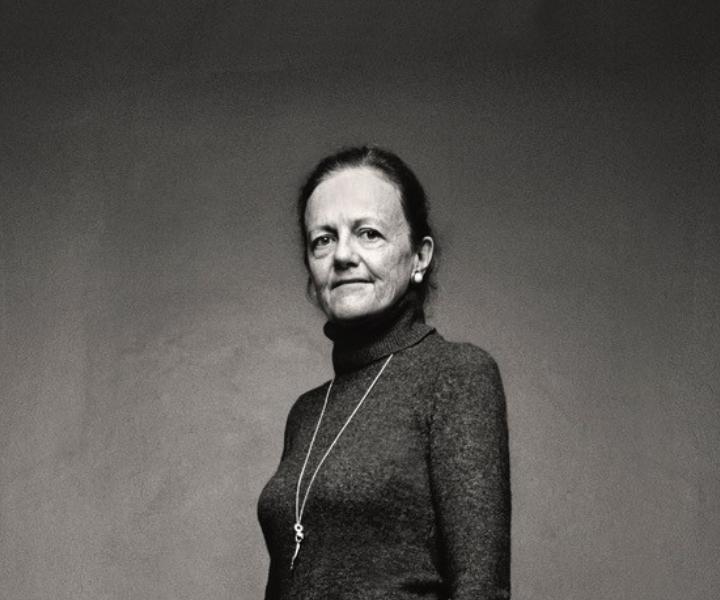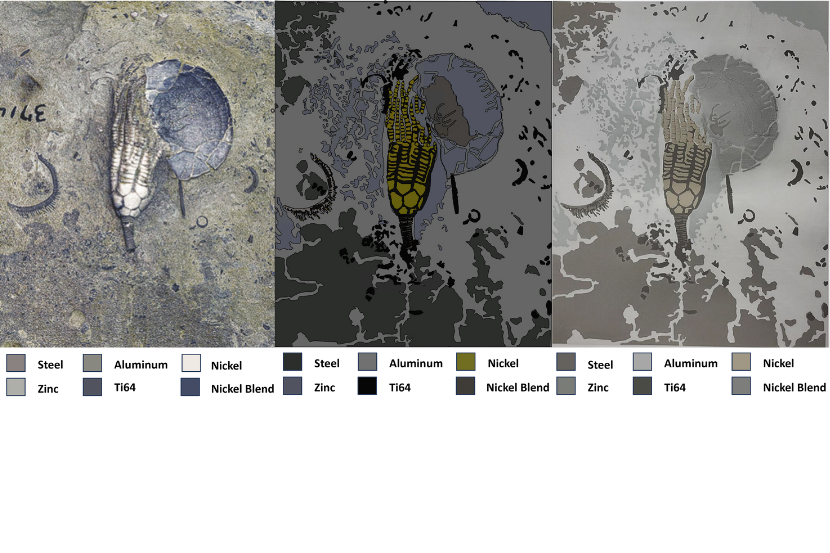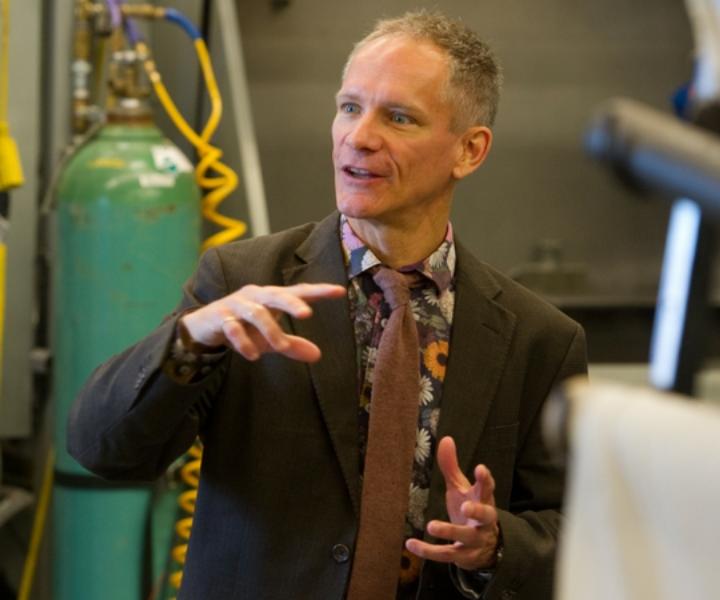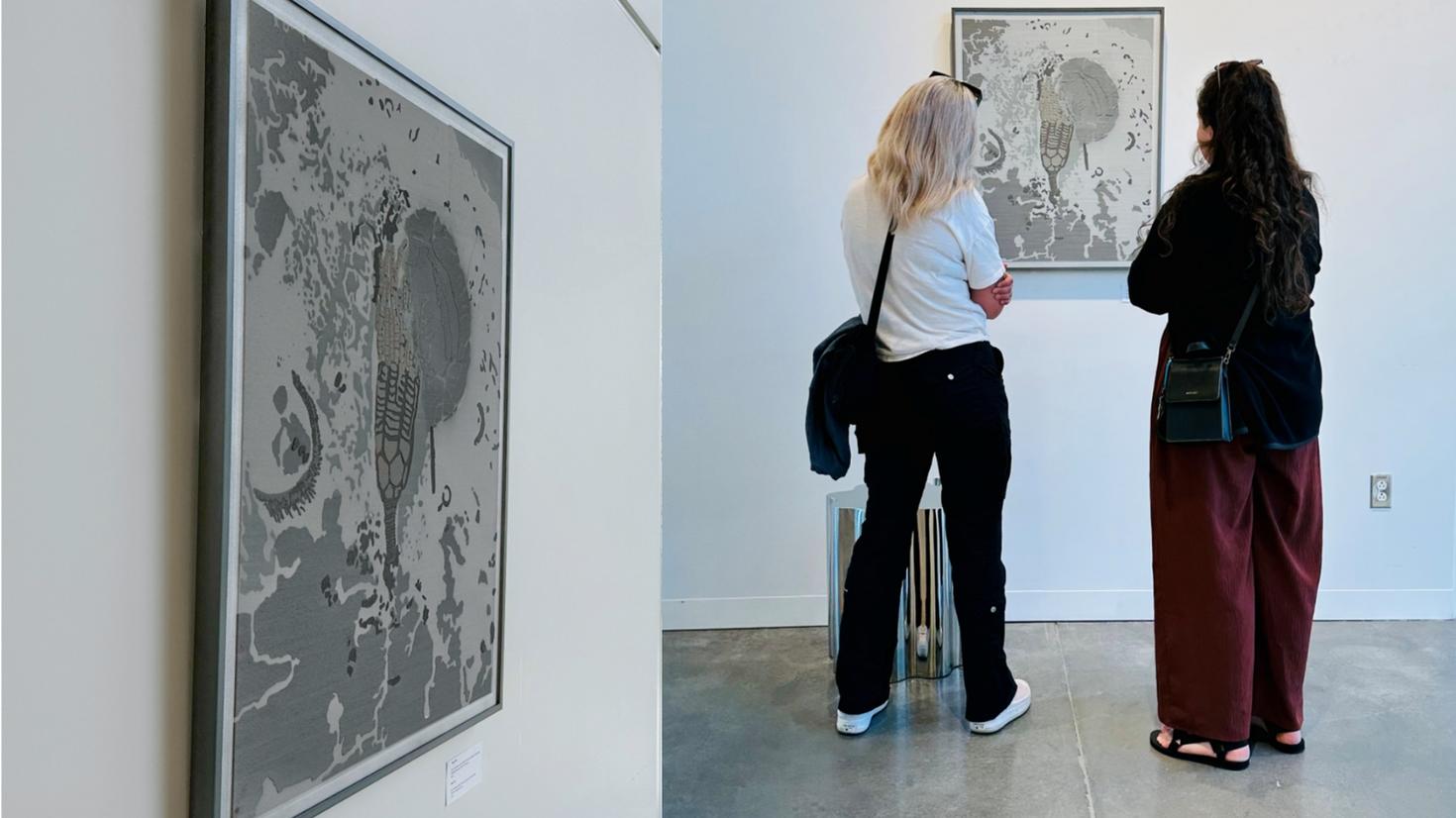A bold collaboration
Visual artist Christine Fitzgerald envisioned a three-dimensional metal artwork created from a photograph of a fossil using modern technology. Her quest led her to uOttawa, where she found a receptive partner in Dr. Bertrand Jodoin, a professor at the Faculty of Engineering. In just hours, he brought his collaborators on board. In synergy, Fitzgerald, Jodoin, Dr. Aleksandra Nastic (a uOttawa alumna and postdoctoral fellow at uToronto) and the PolyCSAM facility of PolyControls and the team embarked on a journey to marry art, science and technology and understand the planet’s past.

“This project is an example of how creative collaborations between arts and sciences can have an impact in facilitating learning and knowledge exchange to audiences through the emotive power of art.”
Christine Fitzgerald
— Ottawa photo-based artist
Deep Time is the result of a multidisciplinary collaboration more typical of the aerospace, biomedical, and automotive fields. The team used Cold Gas Dynamic Spray (CGDS) technology and computer programming to transform a two-dimensional fossil photograph into a stunning three-dimensional metal artwork.
A spectrum of metals, including aluminum, zinc, nickel, titanium, steel and alumina powders, came together to render the final art piece, symbolizing the myriad elements that have shaped our planet’s history.

Anticosti Island: A time capsule
Anticosti Island is more than just the backdrop to this project — it holds the key to understanding a crucial moment in the Earth’s history. The island’s limestone rocks contain countless well-preserved fossils spanning 15 million years of the Earth’s history, from the Upper Ordovician to the Lower Silurian periods, nearly 450 million years ago. With UNESCO recognition as a World Protected site, Anticosti Island provides scientists with a window into the first mass extinction of life on earth.

“A lot of dedication and passion was involved in creating this artwork, and it is likely to inspire us to improve the technology for aerospace applications.”
Bertrand Jodoin
— Professor in the Department of Mechanical Engineering and director of the Cold Spray Laboratory
Significance of the work
Deep Time is not just an artwork. It’s a bridge over millions of years of the Earth’s history, as we seek to understand the impact of humans on the planet and grapple with the effects of climate change, a visual representation of the grand narrative of our planet.
This unique project demonstrates the potential of creative, multidisciplinary collaborations. It invites us to learn from our past, to appreciate Anticosti Island’s importance to science and to use the power of art to convey complex scientific ideas to a broader audience.
Deep Time will be on exhibit at the Karsh-Masson Gallery at City Hall in Ottawa from May 9, 2024, for 11 weeks.


